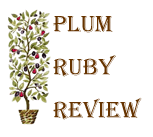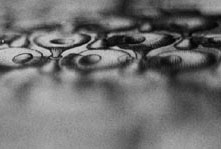|
|
|
|
||||||||||||
|
Note : The following sections are from a book-length hybrid work which is itself the first in a trilogy (“Hands” and “Faces,” the last a full-prose work, being the second and third). The general theme throughout the trilogy is physiognomics: finding the faces of things, and presenting one's full face, or human presence, to the “other.” “Coins” pursues this theme by focusing specifically on the title emblem – in various literal and figural permutations. As “poetry of research,” the text includes occasional citations.. ¡ In his study, Dante gems singular coins out of the damned, the merely dead, the saved, the living, the waiting, the wandering. Everyone waits for the tessellation of their last profile; tile on tile, each soul's character is made. Words make a movie, a life, words make the poet. (The last great analogue: today, even the damned are digital.) · Struck from the planchet of raw time, the coin is “I am.” It is off-center, the stamp is hit with a different force each time, every coin is an approximation of value, exact only in haggling's aftermath: adding up what you got away with, what you lost, what you'll hold to next time. · The coin is I am . “Every man is tasked to make his life, even in its details, worthy of the contemplation of his most elevated and critical hour. [Paul Claudel]" I imagine those moments as coins, out of currency, the civilization lost; some later race of collectors, middle-aged men standing in a collector's shop, connoisseurs of their own obsessions. When a non-initiate enters, they all turn as one, cow-headed, heavy-eyed, death-dealing to the stranger. Their shirts are untucked, one of them has a coin perched in his ear; cyclopped: the left lens of his horn-rims is black. ¡ (The Invention of the Pre-Cinema) Major James Bell, First-Sight Phenomena ; remarks on a pair of coins from the reign of Boadicea, queen of Britain: It is of a slightly convex, or dish-shaped form, bearing on the concave side a rudely-executed horse, with a well-formed chariot wheel, and various rings, as well as small crosses, or stars, and balls, indicative, most probably, of the value of the coin; and on the convex side the word ODVOC, thus wanting the initial B; while, singularly enough, the only other extant coin of Boadicea's days, which is preserved in the British Museum, bears only BODVO, there not being sufficient space on the surface of either coin to admit the entire name. The two coins, in their own time, blinking. Two eyes of equal value, oscillating – equal only while the chariot's wheel kept turning, somewhere outside the coin's concavity (odd shape – as if made for the cupped palm, the Queen's name buttoning the pulse). Blinking left, blinking right: two coins, two hands. In the mind they flip over and over, a cloud of motion arises, eyes blink life. Theater of memory: a thousand facets in, toward a single center, where the light will never reach. ¡ Peripheries create. Coronas, halos, auras, verges, cilia: “outside ourselves, there is a knowledge things have of each other. “Things are our edges, our gravity. The profile of life is a turn sideways between things; their “inanimate” [Paul Claudel] appearance is disguise, avoidance of too much attention. Things are animations turned sideways in shyness; our quickness embarrasses them; what hurry, the things ask, to spend your atoms through eternity? The best thought is the one that swims out into the life of the cosmos just past the halfway point, where it has no life but to quest to the end. · I had a goldfish of a thought two days ago; it seems near to Pluto already, large as a whale. My three seconds, rare beyond the third planet, rise in value as they travel the system. The lonelier I get, the more I'm worth, and the fewer there are who'd pay. ¡ “The air as soon as there is light is filled with innumerable images to which the eye serves as a magnet.” [Leonardo da Vinci] · The acanthus frame and ingest: caryatids whispering, shifting slightly. Faces in the ceiling, blinking. Sweat; a slight cough echoing in the choir. ¡ The minute is a coin-sized face looking back from the edge of the hour, the hour is a face from day's end, the day is a coin of the year. Farthing, penny, shilling, pound, pause at the corner and count your crowns; up, down, rich poor, go to your uncle and ask for more – · “Time is an appearance that takes the form of day and night. [Sextus Empiricus]" Everything in careful balance, as long as possible: and then – the hour has just arrived. We pin it to the 12, but it draws itself up from the very crux, pivot-point of the hands (wrist? nape? heart? gut? anywhere but the brain…). “So the throbs of our heart bring about the hour we are [Paul Claudel]." The hour has just arrived, hour of hours – the hour that plowed the first circle of time, that laid the furrow we trail and deepen, hour upon hour by the numerals' design. “Does your noon itself not have another side? [Friedrich Nietzsche]" – Time is a mirror; you are its other side, not midnight, but the deep-purple depths of self. · The second is of contact; the minute, of knowing; the hour, of forgetting, and therefore being. Beyond are things larger than the body can mark, the things of which we are merely the counting-coins. ¡ “A chiseling out from the whole a version, an object of self that is neither of the body nor of the psyche [Karl Jaspers]." Hobo nickels are currency in a parallel world…history is a series of parallels with violent perpendiculars paling through: The Indian-head became, in our time, head of the slave-owner architect…a man who lathed race into his writing so finely, you almost miss it – the dark pigment here and there, color of his madness. America is somewhere between the John Tree Buffalo nickel, the Jefferson, and the hobo fantasy-coins that parallax, ultimately, toward your own stoic profile…mug shot, counterfeit, nickelodeon of the worth of your life. ¡ Everything has a face, everything forms itself to a face. Everything is quick, and if there's a heaven it's the sum of quickness. The stillest statue quivers with life. Will it drop its pose? Will you? The probability of the statue waving, [Richard Dawkins] its wrist crimped once: once, in several times the lifespan of the universe. Given such a luxury of time, atoms will arrange themselves to a quick flick of the marble wrist: heads, tails, tails, heads, tails, heads, tails…the unlikelihood is the brightest coin in the sky… · We leave our descendants the slight limp we inherited from our ancestors. They send back to us the light of dimes, Mercury-headed angels with the fasces of ultimate empire on their backs, a quiver of nuclear mercy, nuclear grace. · It was Liberty, though, on the Mercury dime – Elsie Stevens, muse and wife of Wallace. (True, false, loves me, loves me not; wives the flipsides of their famous husbands: brilliance begins in the bedroom.)
Robert Lunday has a Ph.D. from the University of Houston, 2002. He is a former Stegner and Fine Arts Work Center Fellow, father of one and has published one book so far: Mad Flights , Ashland Poetry Press, 2002. See his recent work in Artful Dodge; War, Literature, and the Arts; Chicago Review; and Small Spiral Notebook and Blue Moon Review. Visit him at http://robertlunday.blogspot.com (a memoir blog based on his stepfather's letters home from Vietnam; in the sub-genre of “Army Brat” lit), and the dormant but soon-reawakening http://hybridpoetics.blogspot.com , a poetics blog, as the name implies. |
||||||||||||
|
||||||||||||

